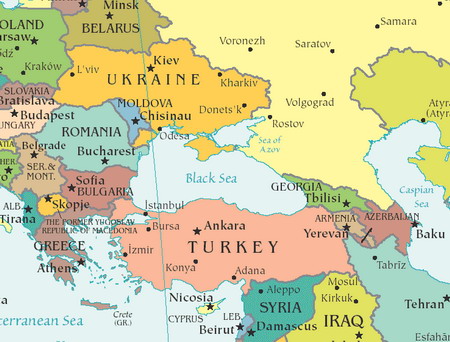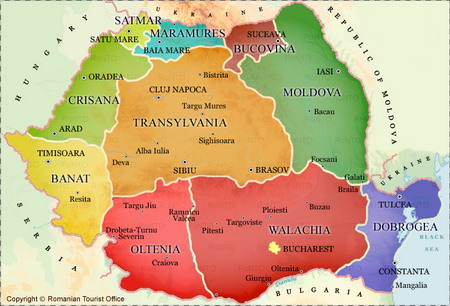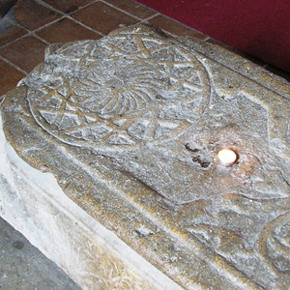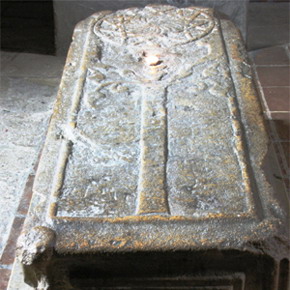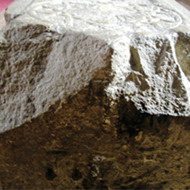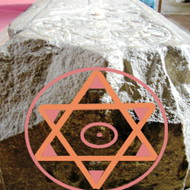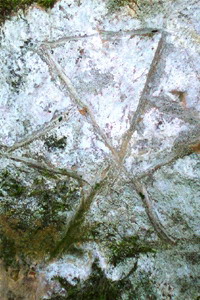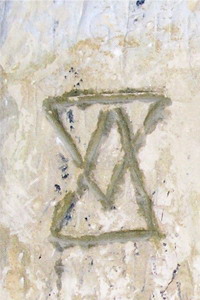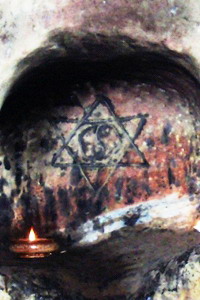|
Rumania and Khazaria
Contents:
1. Introduction, Vlad Totoianu
2. Romania and Bulgaria.
3. King Jehoshaphat of Judah and Ahaziah King of Israel and Romania?
4. Israelite and non-Israelite Ancestries
5. Some Background Information on Romania
6. Wallachia
7. Vlad Totoianu on the Black Duke, Legendary Founder of Wallachia
8. Pictures of Vlad Totoianu Concerning the Black Duke,
9. Jews in Romania.
10. The Szekely of Transylvania
====
====
1. Introduction, Vlad Totoianu
A correspondent named, Vlad Totoianu, sent us several photographs proving he says that the founder of Wallachia, The Black Duke - Radu, was of Jewish and/or Khazar origin.
Wallachia was to become a major province of the State of Romania.
This is not our field of study.
We did however produce what we consider to be a very important work proving the Hebrew origin of the Khazars who converted to Judaism.
The Khazars. Tribe 13 - Israelite Tribes in Exile
http://www.britam.org/Khazarbook.html
We also study the whereabouts of the Lost Ten Tribes.
In some cases this has a peripheral connection to the history of the Jews and Jewish/Israelite influence on Gentiles on general.
What is more the findings of Vlad Totoianu, if correct, may be of importance for the study of history in other fields and therefore we should do something to help publish them.
We have therefore written the present article which combines the photos in question along with general information concerning Romania and its neighbors that may of interest.
====
====
2. Romania and Bulgaria.
Romania is north of Bulgaria.
The Romanians are generally considered to be basically of local Slavonic type who intermixed with Roman soldiers. Consequently the language of Romania is based on Latin.
The official language of Romania is Romanian, a Romance language related to Italian, French, Spanish and Portuguese. Romanian is spoken as a first language by 91% of the population.
The Bulgarians are also generally considered to be of local Slavonic type who intermixed with a people from the east known as the Bulgars who spoke a Turkish dialect.
Both nations adjoin the Black Sea and in ancient times were part of Scythia. The Black Sea is like a lake surrounded by Russia, Ukraine, Moldovia, Romania, Bulgaria, Turkey. The Black Sea serves to link these regions together. Through the Bosporus Straits of Turkey the Black Sea joins the region of Greece and the Mediterranean Sea.
Roughly speaking Bulgaria is associated with ancient Thrace.
Romania is also associated with the Thracians though it later became the domain of the Scythians and of the Dacians and Getae.
Jewish Traditions (e.g. Natziv, Ginzberg) speak of Israelite Presence in these areas dating from even before the Exile of the Ten Tribes.
British Israelite Literature also deals with such possibilities. We on the other hand, try to concentrate on the situation following the Assyrian Conquest and exile of Northern Israel.
Nevertheless the possibility of Israelite contacts and even settlement from beforehand does exist.
====
====
3. King Jehoshaphat of Judah and Ahaziah King of Israel and Romania?
Josephus mentions the Kings of Judah and Israel cooperating in a project to send ships to trade with the Black Sea area (Pontus) and with Thrace.
Antiquities of the Jews by Josephus.
BOOK 9; CHAPTER 1. CONCERNING JEHOSHAPHAT AGAIN; HOW HE CONSTITUTED JUDGES AND, BY GOD'S ASSISTANCE OVERCAME HIS ENEMIES.
http://www.ccel.org/ccel/josephus/complete.ii.x.i.html
9.1.4. And when the king [i.e. Jehoshaphtat of Judah] had brought his army back to Jerusalem, he betook himself to celebrate festivals, and offer sacrifices, and this for many days. And indeed, after this destruction of their enemies, and when it came to the ears of the foreign nations, they were all greatly aftrighted, as supposing that God would openly fight for him hereafter. So Jehoshaphat from that time lived in great glory and splendor, on account of his righteousness and his piety towards God. He was also in friendship with Ahab's son, who was king of Israel; and he joined with him in the building of ships that were to sail to Pontus, and the traffic [merchant] cities of Thrace but he failed of his gains, for the ships were destroyed by being so great [and unwieldy]; on which account he was no longer concerned about shipping. And this is the history of Jehoshaphat, the king of Jerusalem.
What are here Pontus and Thrace, as the places whither Jehoshaphat's fleet was to have sailed, are in the Bible Ophir and Tarshish. The place whence they were to have sailed was Eziongeber, which lay on the Red Sea. It was impossible for any ships to sail from Ezion-Geber to Pontus or Thrace.
[2-Chronicles 20:35] AND AFTER THIS DID JEHOSHAPHAT KING OF JUDAH JOIN HIMSELF WITH AHAZIAH KING OF ISRAEL, WHO DID VERY WICKEDLY:
[2-Chronicles 20:36] AND HE JOINED HIMSELF WITH HIM TO MAKE SHIPS TO GO TO TARSHISH: AND THEY MADE THE SHIPS IN EZIONGABER.
[1-Kings 22:48] JEHOSHAPHAT MADE SHIPS OF THARSHISH TO GO TO OPHIR FOR GOLD: BUT THEY WENT NOT; FOR THE SHIPS WERE BROKEN AT EZIONGEBER.
It seems unlikely that Josephus had entirely got his geography or history mixed up.
We may therefore assume that there existed an independent tradition of Israelite mercantile links to the Black Sea area.
====
====
4. Israelite and non-Israelite Ancestries
Midrashic sources traced the inhabitants of Thrace to Tiras son of Japhet or to descendants of the Canaanites.
We identified the Ten Lost Tribes with peoples otherwise equated with a portion of the Cimmerians and Scythians. These included the Daci and Getae who inhabited what is now Romania. The Dacians were attacked by the Romans. Many were exterminated. others moved to Denmark while still others were in Northern Germany and are numbered by Bede and others amongst the Anglo-Saxon invaders of what became England.
We understand that the region of Romania was taken over by others.
Rumania on the whole does not fulfill our Ephraimite Criteria for deciding which peoples do or do not descend from Israelites.
http://www.britam.org/criteria.html
Nevertheless we have followers and subscribers in Romania who feel otherwise and some of these are scholars in their own right.
====
====
5. Some Background Information on Romania
Adapted (with some mild alterations) from Romania
From Wikipedia, the free encyclopedia
Extracts:
Romania , formerly also spelled Roumania and Rumania, is a country located between Central Europe and Southeastern Europe, bordering the Black Sea. Romania shares a border with Hungary and Serbia to the west, Ukraine and Moldova to the northeast and east, and Bulgaria to the south... has the seventh largest population of the European Union with 20,121,641 people (20 October 2011). Its capital and largest city is Bucharest ? the sixth largest city in the EU.
Romania derives from the Latin romanus, meaning "citizen of Rome". The first known use of the appellation was by 16th-century Italian humanists travelling in Transylvania, Moldavia, and Wallachia.
In general it seems that the people of Romania recognized their mutual kinship. They struggled for independence against the encroachments of Hungary, the Ottoman Empire of Turkey, and of Russia. In recent times they chose a German monarch, and were allies of Germany on WW1 and WW2.
The earliest written evidence of people living in the territory of present-day Romania, the Getae, comes from Herodotus, in his Histories book IV (c. 440 BC).[30] Territories located north of the Danube were inhabited by Dacians, who are considered to have belonged to the Getae tribes, mentioned by Herodotus, that were a branch of Thracian people. The Dacian kingdom reached its peak between 82 and 44 BC during the reign of Burebista.
Roman Emperor Domitian led military campaigns in the region between 87 and 88 AD at Tapae. Roman incursions happened again during the years 101-102 AD, and 105-106 AD under Emperor Trajan, who successfully defeated Dacia and annexed its southwestern parts to the vast Roman Empire. The Dacian population subsequently underwent the ethno-linguistic process of Romanisation and the conquered parts became an imperial province called Dacia. Because of Dacia's rich ore deposits (especially gold and silver), Rome brought colonists from all over the empire. This introduced Vulgar Latin and started a period of intense romanisation that would give birth to the Proto-Romanian language. During the 3rd century AD, with the invasions of migratory populations, the Roman Empire was forced to pull out of Dacia around 271 AD, making it the first province to be abandoned.
After the Roman army and administration left Dacia, the territory was invaded by various migratory populations including Goths, Huns, Slavs, Gepids, Avars, Bulgars, Pechenegs, and Cumans.... Several competing theories have been proposed to explain the origin of modern Romanians. Linguistic and geo-historical analysis tend to indicate that Romanians coalesced as a major ethnic group both south and north of the Danube in the regions previously colonized by Romans.
In the Middle Ages, Romanians lived in three distinct principalities: Wallachia, Moldavia and Transylvania. By the 11th century, Transylvania had become a largely autonomous part of the Kingdom of Hungary. It was independent as the Principality of Transylvania from the 16th century until 1711.
The provinces that became Romania were ruled by the Turkish Ottoman Empire.
The United Principalities emerged when the territories of Moldavia and Wallachia were united under Prince Alexander Ioan Cuza in 1859.
Independence was achieved from the Ottomans.
In 1866 Prince Karl of Hohenzollern-Sigmaringen [southwest Germany] was called to the throne as the Ruling Prince of the Romanian Principate and in 1881 he was finally crowned as King Carol I, the first monarch of the Kingdom of Romania. Rumania was an ally of Germany in the First and Second World Wars.
With the fall of the Iron Curtain, Romania began its transition towards democracy and a capitalist market economy. After a decade of post-revolution economic problems and living-standards decline, extensive reforms fostered economic recovery. As of 2010, Romania is an upper-middle income country with a high Human Development Index. Romania joined NATO on 29 March 2004, and the European Union on 1 January 2007. It is also a member of the Latin Union, Francophonie, OSCE, WTO, BSEC, United Nations, etc. Today, Romania is a unitary semi-presidential republic, in which the executive branch consists of the President and the Government.
====
====
6. Wallachia
From Wikipedia, the free encyclopedia
http://en.wikipedia.org/wiki/Wallachia
Wallachia or Walachia is a historical and geographical region of Romania. It is situated north of the Danube and south of the Southern Carpathians.
Wallachia was founded as a principality in the early 14th century by Basarab I, after a rebellion against Charles I of Hungary, although the first mention of the territory of Wallachia west of the river Olt dates to a charter given to the voievod Seneslau in 1246 by Bela IV of Hungary. In 1417, Wallachia accepted the suzerainty of the Ottoman Empire; this lasted until the 19th century, albeit with brief periods of Russian occupation between 1768 and 1854. In 1859, Wallachia united with Moldavia (as United Principalities), to form the basis of the modern state of Romania, with Transylvania joining 59 years later (1918) to form the new Kingdom of Romania which was first established 1881.
Wallachia's creation, held by local traditions to have been the work of one Radu Negru (Black Duke), is historically connected with Basarab I (1310-1352), who rebelled against Charles I of Hungary and took up rule on either side of the Olt River, establishing his residence in Compulung as the first ruler in the House of Basarab.
====
====
7. Vlad Totoianu on the Black Duke, Legendary Founder of Wallachia
Vlad Totoianu <vladtotoianu@yahoo.com>
Two groups of pictures:
I. Related to the Place of Cult near Sinca village( 45-45'20.84"N 25-10'0.36"E). The synagogue is carved in some kind of a quarry (of salted sand). It has an Aron Kodesh [Holy Ark Chest for the Torah Scrolls] with the Seal of Solomon, the imprint of Bimah [podium for Torah reading] on the floor and remains of red paint all over.
From outside to the inside of The Sacred Place, The Symbol is carved in some kind of a "genesis" from two triangles.
II. Related to the Tomb of the "Black Duke" (Radu Negru) - the first Leader of Wallachia, in the city of Curtea de Arges (The Royal Court of Arges 45- 8'30.27"N 24-40'31.29"E). The sarcophagus has a Croix Ancree upon the feet; The Sephirotic Tree on the ground-side and The Seal of Solomon with nikkud upon the head. The Seal was grossly desecrated with a hammer on the time of it's discovery and the writing on tombal stone - erased.
................................................
Our folkloric tradition says The Black Duke - Radu came from over the mountains and established Wallachia.
"...over the mountains..." means "Fagaras County" i.e. Sinca/Sarkany villages.
The items found upon him, in his grave, clearly shows he was a Noble Man of German tongue. The symbols on his sarcophagus are...
He knew Quabalah and his blood was Kabar [a Tribe that practised Judaism and was probably an offshoot of the Kahzars. ]
He came to find a safe haven for his belief; from Ardeal [i.e. Transylvania] - his native land.
====
====
8. Pictures of Vlad Totoianu Concerning the Black Duke,
====
====
9. Jews in Romania.
The Khazars once ruled over Rumania.
Large numbers of Jews have always been present in the country.
These Jews included Ashkenazim, Sephardim, and Karaites.
Great Sages came from Rumania as well as famous Hasidic dynasties such as Satmar (the world's largest group), Klausenburg, and Spinka.
Jews from Romania have played an important role in the State of Israel.
Anti-Semitism in Romania
http://www.romanianjewish.org/en/antisemitism_in_romania_02.html
Extract:
In today's Romania beliefs such as "The Jews are behind the death of Jesus", "The Jews are ruling the world through financial manipulations", are still very widely-held , particularly within the older population of the country.
The results of a national wide published survey conducted in October 2002 demonstrate that the majority of Romania's population believes that Romanian Jews are in better financial shape than the rest of the population. The same survey pointed out that a greater part of the Romanian population believes that the model of the "Jewish businessman" should be adopted in order to improve the poor Romanian economic situation.
Even the "pro-Jewish" attitude adopted by many Romanian officials is often based on the simplistic belief that the Jews control world politics and finance and Jewish favour can bring benefits to Romania.
There is no doubt that just as in other countries, in Romania anti-Semitism and anti-Israel feelings are mixed and linked. However, in Romania, virulent anti-Israel sentiment is less pronounced, and does not seem to feed anti-Semitic sentiments.
Romania and Romanians on the whole have always been anti-Jewish.
265,000 Romanian Jews (43% of pre-war population) died in the Shoah/Holocaust.
As recently as December 12, 2013 , Romanian public television featured Christmas carolers singing a folk tune about the 'damn kikes' who should be burned
See:
[Romania] Christmas Carolers Sing 'Burn Kikes' on Romanian Television;
http://www.adl.org/press-center/press-releases/anti-semitism-international/christmas-carolers-sing-burn-kikes-on-romanian-tv.html
'... But the kikes / Damn kikes / Holy God would not leave the kike alive / Either in the sky or on the earth / Only in the chimney as smoke / This is what the kike is good for / To make kike smoke through the chimney on the street.'
There were however numerous exceptions.
Quite a few converts to Judaism emerged from Romania.
====
====
10. The Szekely of Transylvania
In Transylvannia the Hungarian speaking minority of Romania includes the Szekely people.
Amongst the Szekely were to be found numerous Sabbatarians meaning Christians who kept the Sabbath and other Hebrew customs.
So too the Szekely included Unitarian Christians, Gentile practitioners of Judaism without conversion, and converts to Judaism.
See:
Discovering Europe's non-Jews who kept the faith
http://www.haaretz.com/weekend/magazine/discovering-europe-s-non-jews-who-kept-the-faith-1.387208
So too, amongst the Szekely there existed an alphabet that was more than 50% Phoenician meaning of Ancient Hebrew type.
This alphabet has been attributed to the Khazars.
See:
"Brit-Am Now"-908
3. Khazars and Phoenician Script
http://britam.org/now/908Now.html
The Szekely however speak an Hungarian dialect and were always identified more with the Hungarians.
"In some of his works he [i.e. Simon Pechi, 1575?1642] maintained that there are common lines of destiny in the history of the Jewish and Hungarian peoples."
|
